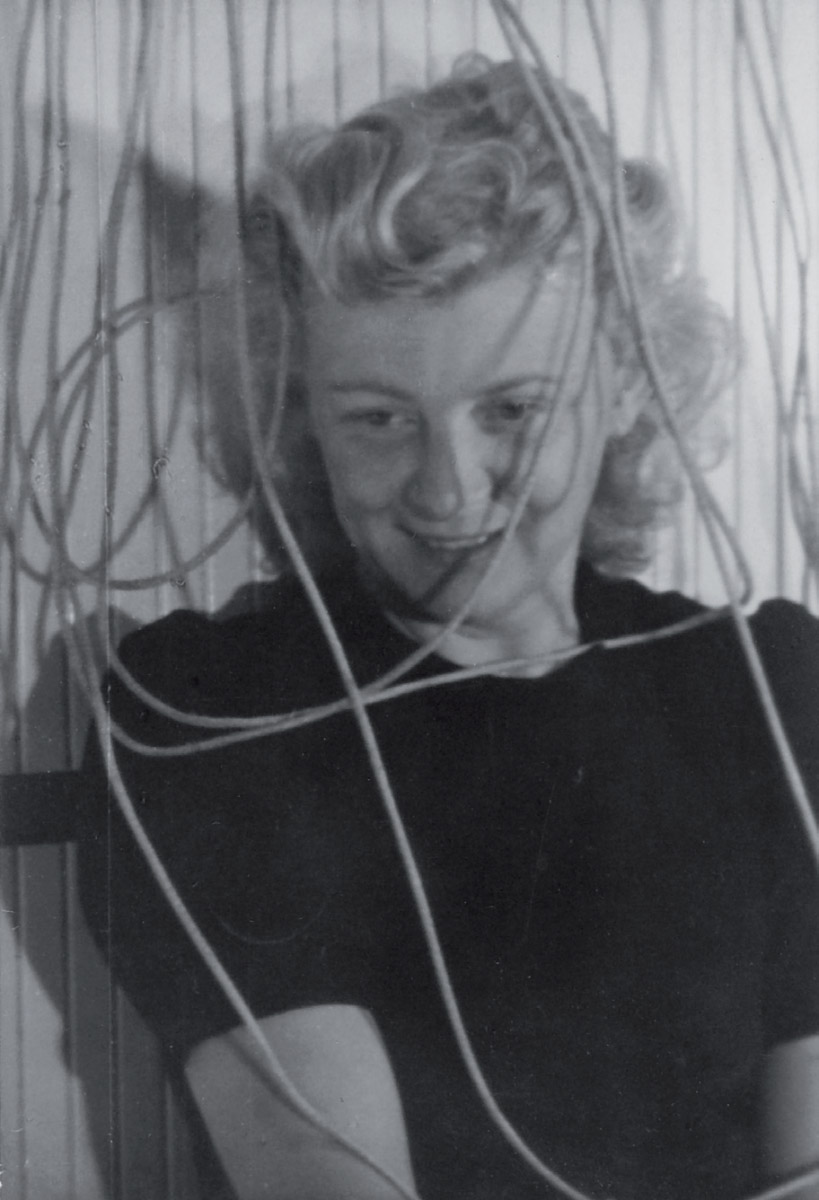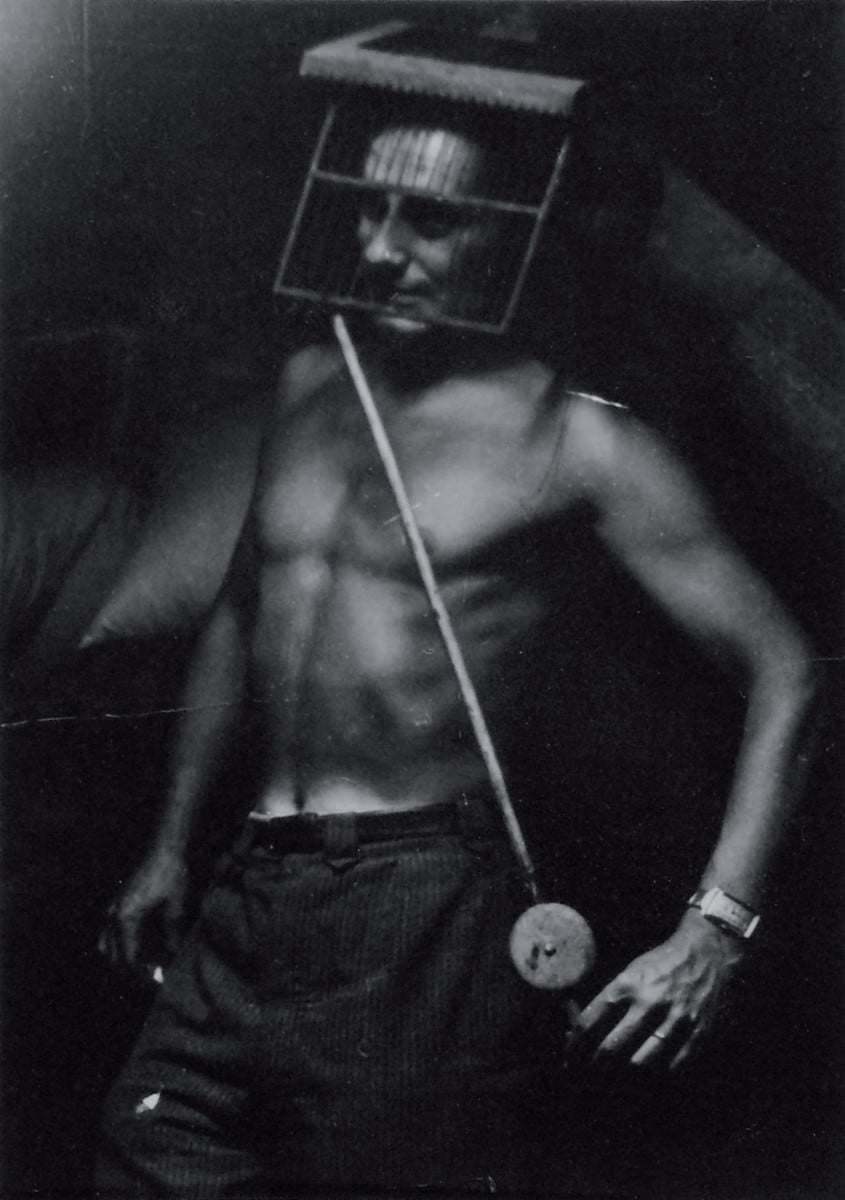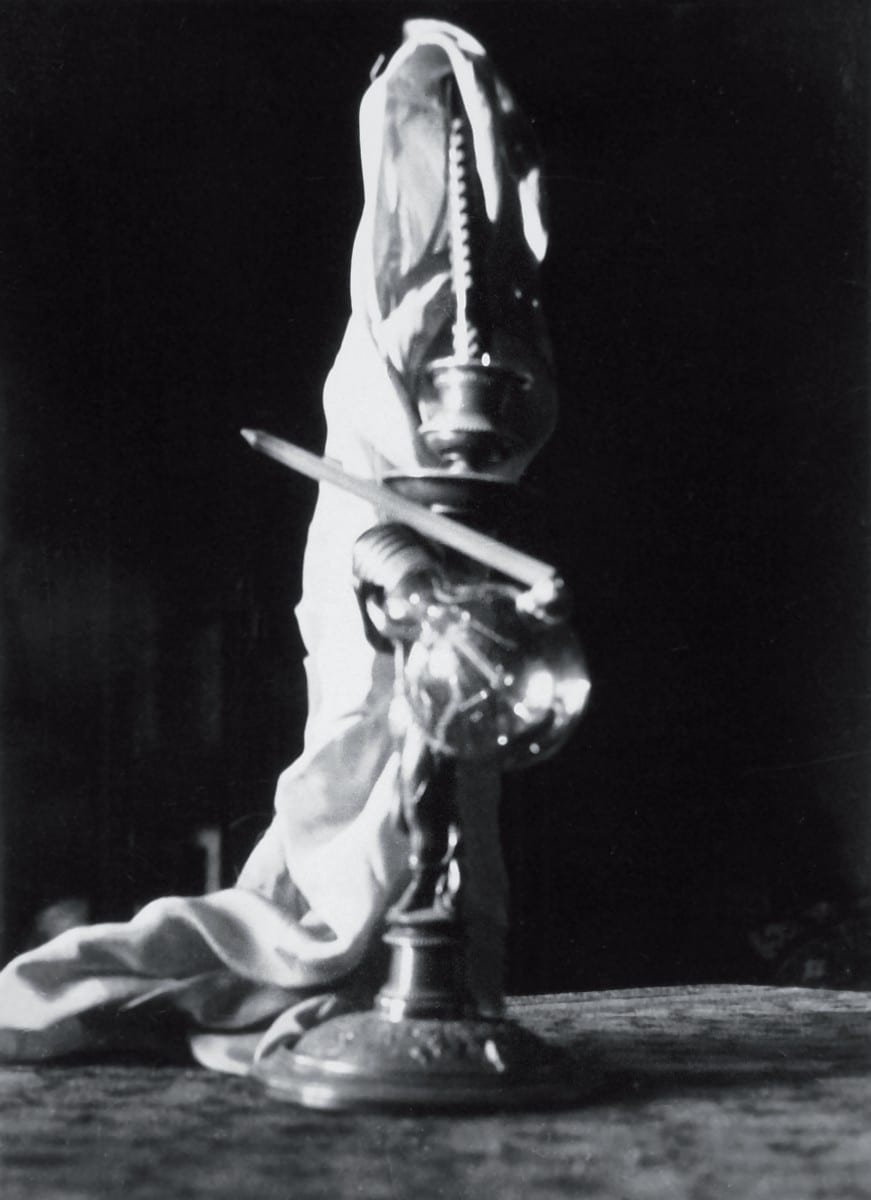Václav Zykmund
From 1972 until the end of his life he could not exhibit his work in his native country, and published his texts under assumed names. The readers of Československá fotografie (Czechoslovak Photography] probably know him best under the name of his third wife, the artist and critic Alena šlachtová (as well as other pseudonymy – Libuše Kovářová, Taras Štefek…). As a proscribed artists he did not feature in the essential retrospectives of inter-war photography at home, while he was included in their reprises both in Essen and in Vienna.”
In 1940, he moved his operations from Rakovník, where he ran the Ra edition, to Brno. The name was derived from its place of origin in 1937, and after the war this name was adopted by his whole Brno group. In May 1944, Zykmund published the pinnacle of his work in photography – twenty small books entitled Výhružný kompas (Menacing Compass); the photographs were pasted onto pages and accompanied by type-written poems by Ludvík Kundera. The photographs were created during an event that the artist recalled in 1983 – 1984 (as published by Suzanne E. Pastor in 1993 in the Prague House of Photography catalo-gue entitled Václav Zykmund: Fotografie 1933-1945): “k was not, however, merely a noncommittal form of play, since it involved persiflage, irony and parody, and thus the result was in many ways identical with what only much later started to be called “events”, or “happenings”. I started with this kind of game already around 1935. The outcome, which sprang from spontaneity, was tinged with a lyrical quality, the sources of which lie in the aura of mystery with which we surrounded the photographed objects and the relationships between them. At the beginning of the 1940s, this more or less free play turned into an irresistible and uncontrollable passion, and the number of participants grew. The meetings took place in the evenings, and our activities lasted untřl the small hours. There were no set limits, imagination had free range and the group played this out, the ‘working’ stages of which were recorded by M. Koreček. A play without a script, without a pian, with props found by chance, evolved to the border of the absurd. In that way, several cycles were created, of which only one, Menacing Compass, was reproduced.” After 1945 these game came to an end, there appeared new goals on the horizons, still, the cycles remained so firmly fixed in our memory that I feel the urge to continue them, going beyond contemporary efforts of this kind, into an unknown land, as yet unmapped.”,
After the end of the war, Václav Zykmund dealt with photography exclusively as theory. In the years 1960 – 1972 he was head of the Department of Arts Training at the Faculty of Philosophy at Palacký University in Olomouc. The sole occasion when he presented his own work was in the 1960s., It is a pity. For he was uncompromising in his judgments: “Progressiveness alone does not enhance the social significance, for there is no progress without stabilization and without penetrating the public consciousness.”, He also wrote, that “a historian faces the task of portraying the time not on the basis of objectivist statement of the separace historical faces, but on the basis of grasping what was most vital, most able to evolve, and what was a positive contri-bution for the further developments in art, what meant – principally in termy of method – an enrichment for the process through which we can create an emotional relationship to the world we inhabit.”” The reasons for Zykmund’s reticence about his intense temptations of the medium of photography are hinted at in his texts. Above all we should say that the question posed in the title of his book – Art that Anyone Can Do? (Uměn!, které mohou dělat všichni?) dedicated to the theory of photography, is answered in the negative by a chapter of the same title: photography is not a medium that would enable the realization of the (not only) Marxist chimera that anyone can assume the role of an artist: “Photography is an uncommonly wide-spread field, and the mean visual sensibility of numerous photographers who struggle under the Illusion that they are artists causes an over-production of kitsch.”6′ “Modem visual language does not illustrate an idea, the modem work wants to be the idea itself.”, “Photography can therefore become art only if in the process of its creation the subjective, imaginative side of human psyche asserts itself, aesthetically compre-hending the world”.
His practical experience of the medium gave Zykmund a foundation for generalization. He realized the autonomy of categories, such as the choice of the moment to expose the film, and the period of exposure, as well as the various possibilities of processing both negative and positive images. Still, Zykmund was most concerned with the traditional arts (both in practice and in theory): “for photography in the accustomed sense of the word cannot do without objective reality, painting always requires a greater contribution of the subject than photography, for the process of painting is relatively more complex, and leads more easily towards an originality of style than is the case in photography.”.’ We have to note that this is not always true. For instance, in the 1920s, Jaroslav Rdssler refuted beforehand Zykmund’s later statement that “abstract photography in fact does not exist, so long as the artist works with a camera.”‘w The above-mentioned book in which Václav Zykmund first made this claim was released in 1964, i.e., at a time when Rdssler was vainly trying to exhibit his photo abstractions in the Municipal House of Art in Brno. František Vobecký can also be cited as an example that the second half of Zykmund’s dictum is not automatically valid. Painting can be neither complex, nor lead to an originality of style any more easily than photography does. Let us just mention monochromatic painting… but this does not mean that Václav Zykmund should not have observed the dictum cited as an active artist in determining his personal priorities.
/josef moucha/
Dufek A led), Česká fotografie 1918-1938 from the collections of the Moravian Gallery in Brno: Moravská galerie 1981. Dufek A. Česká fotografie 1918-1938 Výstava ze sbírek Moravské galerie. Praha: Uměleckoprůmyslové museum 1982. Eskildsen U (ed). Tschechische Fotografie 1918-1938. Essen: Museum Falkwang 1984. Zykmund V. Akce. In: Pastor S (ed). Václav Zykmund. Fotografie 1933-1945. Praha: Pražský dům fotografie 1993: 21-22. The contemporary whorn Zykmund mentions, Miloš Koreček, was alongside with Vilém Reichmann the third member of the group Ra, who worked in the medium of photography. The first stage of Koreček “s work (1944-1948) developed an accidental revelation, for which he invented the term fokalk; his next effort based on the same principle followed twenty-three years later. See Klimpl P Neznámý Miloš Koreček. Revue Fotografie 1985; 3: 36-39. Pátek J. Miloš Koreček, zpráva o dvojím vstupu do stejné řeky? Bulletin Moravské galerie v Brně 2003; 58-59: 196-203. The fourth member of Ra who worked with photography intermittently was Josef Istler. See Birgus V (ed). Česká fotografická avantgarda 19184948 Praha: Kant 1999. Zykmund V. Surrealismus a fotograf. Brno: Dům umění města Brna 1966. Zykmund V. Fotografie a společnost Československá fotografie 1971/12: 541. Zykmund V. Umění, které mohou dělat všichni? Praha: Orbis 1968: 77. Ibid.: 60. Ibid.: 73. Ibid.: 34. Ibid.: 60. Ibid.: 121.
#7 New staged photography
Archive
- #45 hypertension
- #44 empathy
- #43 collecting
- #42 food
- #41 postdigital photography
- #40 earthlings
- #39 delight, pain
- #38 death, when you think about it
- #37 uneven ground
- #36 new utopias
- #35 living with humans
- #34 archaeology of euphoria
- #33 investigation
- #32 Non-work
- #31 Body
- #30 Eye In The Sky
- #29 Contemplation
- #28 Cultura / Natura
- #27 Cars
- #26 Documentary Strategies
- #25 Popular Music
- #24 Seeing Is Believing
- #23 Artificial Worlds
- #22 Image and Text
- #21 On Photography
- #20 Public Art
- #19 Film
- #18 80'
- #17 Amateur Photography
- #16 Photography and Painting
- #15 Prague
- #14 Commerce
- #13 Family
- #12 Reconstruction
- #11 Performance
- #10 Eroticon
- #9 Architecture
- #8 Landscape
- #7 New Staged Photography
- #6 The Recycle Image
- #5 Borders Of Documentary
- #4 Intimacy
- #3 Transforming Of Symbol
- #2 Collective Authorship
- #1 Face













